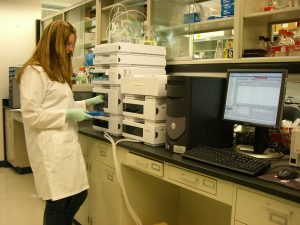In the pharmaceutical industry, equipment calibration is absolutely critical. It is also commonplace since it must be done from time to time. The reason why it is so important is to ensure safety and quality products. Additionally, ensuring strict practices where calibration is concerned is essential if you want to ensure compliance and if you are looking to reduce costs that are associated with potential fines for non-compliance and lost batches.

Calibration determines the accuracy of your instruments and the performance of your sensors. Even though many of the instruments in the market today are quite accurate, there are regulatory bodies that will need to know how accurate your instruments are. It is important to view efficient instrument calibration as a foundation for your entire laboratory patient testing. This is indeed the very first step to ensuring that your patient results are reliable. You should pay closer attention for this reason.
Calibration establishes a reference point, which helps your instruments to give results that are accurate. Regardless of what your instruments measure, they need to be calibrated every so often. Lab analyzers use the same principle. The difference being that they use a standard that has a concentration that is already known in place of weights. Using the concentration given for each one of the analytes, the instrument is programmed based on the information in the kit that has been provided with the calibrator. The calibrator is measured by the instrument and then adjustments are made that match the values given.
Choosing the Right Calibrator in 4 Steps
- Third Party Calibrators – You want to use these because they come with assigned values that are independent. Additionally, they have not been optimized for use with specific reagent systems or instruments.
- The calibrator you select should have the same matrix that the patient sample has. An example of this is that if you are calibrating tests for urine chemistry the calibrator you select should also be urine based.
- The calibrator you use should have a shelf life that is long and should also be multi-analyte. This is great for saving your lab money and time.
- Finally, ensure that the calibrator you select can be traced back to some reference materials. This will ensure accurate and comparable results for your tests.
One of the important things is to know the best time to recalibrate. This ensures that the instrument establishes reliable baselines, creating a foundation that is strong for patient results that are accurate. It is therefore recommended that you recalibrate frequently.
Calibrating Successfully in the Lab in 5 Steps
- This may sound obvious, but the first step is to make sure that you are following the instructions provided by the reagent or instrument manufacturer. If this is not available, select a frequency as dictated by the frequency of your internal QC.
- When you are validating assays, be sure to also assess the calibration frequency that is required. Depending on how stable the assay is you may be required to recalibrate less or more frequently.
- When you change a batch of reagents, be sure to re-calibrate unless you are able to demonstrate that your control values as well as patient results will not be adversely affected by changing the lot numbers of your reagent.
- If you notice that the QC results you have are showing a bias that is systemic, you need to re-calibrate. By doing so, you will be able to eliminate diminutive analytical biases or trends.
- If you have carried out major maintenance on your instruments you need to re-calibrate. Lamp changes are considered major maintenance. These can cause QC value shifts.
If you will follow the guidelines provided here above, you will be sure that the laboratory equipment you are using has been calibrated properly and that you have set the proper foundations in place for getting patient results that are accurate every time. By incorporating best practice in your calibration methods, you will be preparing your measuring system to perform according to its intended purpose. You will also be avoiding the risk of financial loss due to penalties as well as the risk of compromising the quality of patient test results.

